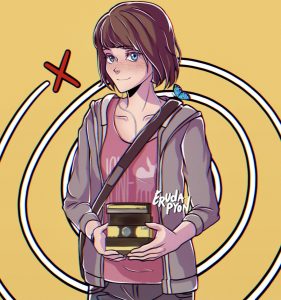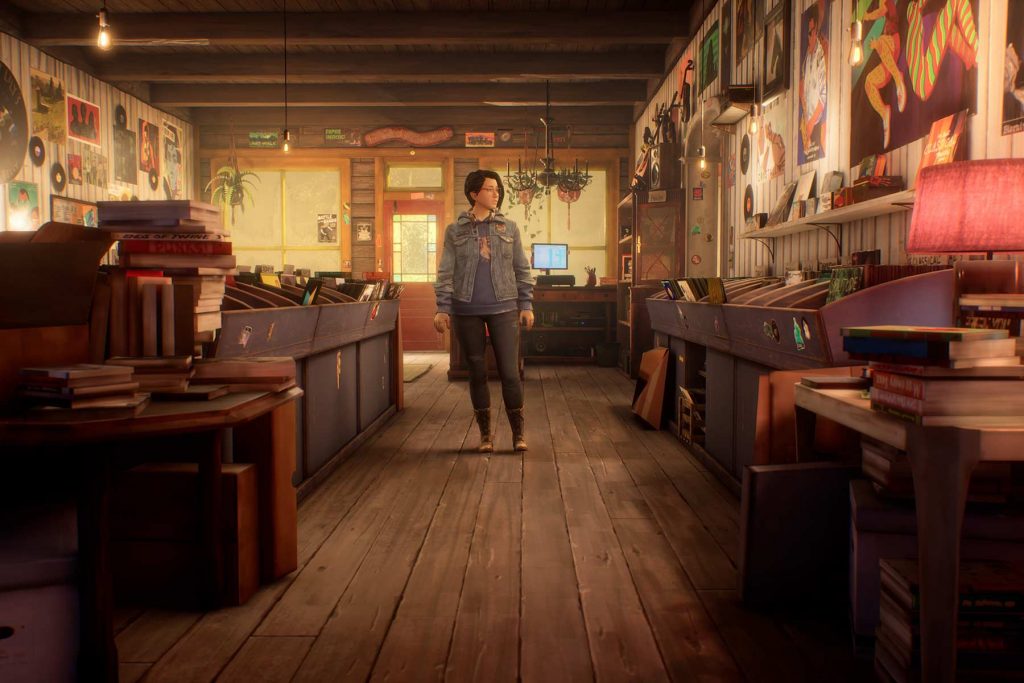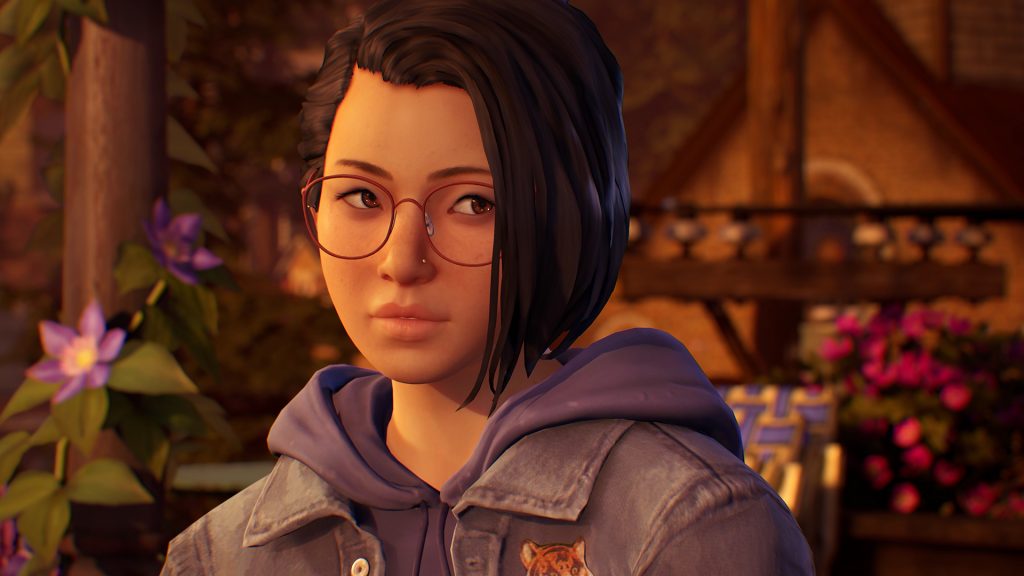With 'Life is Strange: True Colors' out now, Rolling Stone goes inside the game that has helped its biggest fans discover their true selves.
This article is created to celebrate the release of Life is Strange: True Colors, the groundbreaking narrative adventure game in which emotions and the choices you make become your superpower.
Video games are a fascinating medium, presenting players the opportunity to escape their lives and enter a world of wonder. For many of us, it’s a chance to make choices you otherwise couldn’t. Do things you most likely wouldn’t. Most of all, video games allow us to be whoever we want to be and connect with characters often ignored by mainstream media.
The Life is Strange franchise has presented such opportunities for over five years now, and with the latest entry in the beloved series, Life is Strange: True Colors, now available, we thought it was the perfect opportunity to discover some of the series’ biggest fans and how it has changed their lives.
But let us first take a step back to 2015, when video game developer Dontnod Entertainment released the first episode in its new project, Life is Strange. It’s here that we were introduced to the plights of high school student Maxine “Max” Caulfield, a photography senior who discovers she can rewind time while saving her best friend Chloe Price. It was a game filled with difficult choices and meaningful consequences. By the end of the story, it was a journey you had created.
Life is Strange’s unique blend of high school drama and supernatural abilities was a fascinating combination that won over critics and gamers alike. Even more importantly, the whole adventure was backed up by realistic, relatable characters. Naturally then, it didn’t take long for people to recognise some of the game’s central themes—like inclusion, diversity, and sexuality—and start connecting with them. The game has also been championed for its distinct, female-empowered perspective.
“I’d been playing video games nearly all my life, but Life is Strange was the first game that felt like it was written with women in mind, exploring women and the specific things they face,” says Cassandra, 28-year old shipping assistant and long-time fan.
Watch the official trailer for Life Is Strange: True Colors
“One of the ways it continues to explore that theme is through sexuality. I played this game months after having come out as bisexual. Coming to terms with that was a long process, and I realised it partly because I was able to look at interactions I’d had with a high school friend and notice ‘Oh, there was a lot more to my feelings for her. I was just in denial.’
Love Music?
Get your daily dose of everything happening in Australian/New Zealand music and globally.
“So it was pretty easy to resonate with Max, who had considered herself to be straight, slowly realising over the course of her week with Chloe that there’s a lot more to her own feelings.”
Cassandra was by no means alone. “I started questioning my sexuality when I was 16 after I realised I was having a crush on a girl,” explains Erudapyon, a 19-year-old artist whose artworks have been featured by Life is Strange’s official social accounts.

@Erudapyon‘s artwork that was featured on Life Is Strange‘s official social accounts
“Everyone around me tried to convince me otherwise and that I simply wanted to be like the girl and admired her. I’m a Filipino who grew up and currently lives in Singapore so I’m not exactly surrounded by LGBTQ positivity. The crush lasted only for a few weeks, so I thought maybe it really was just admiration. But when I discovered Life is Strange, I realised how deeply Chloe’s character resonated with me. Not the personality or background per se, but more of how bold she was in flirting with Max and her general unconventional behaviour. I started to realise the reason why I loved her character was because she was who I wanted to be—proud and open with her feelings for other girls.”
The ways in which Life is Strange has helped fans accept themselves for who they are is deeply powerful. Meanwhile, for other fans, the franchise has turned their entire life journey in a bold new direction. Case in point: Laura, a 36-year-old living in Brazil whose interest in Life is Strange fan-fiction eventually led to her becoming a successfully published writer.
“A couple of months after playing Life is Strange, I felt more and more willing to talk about it. I had theories and wanted to talk about ‘what-if?’ scenarios. I joined fan groups, and it was in December 2016 where I began writing Life is Strange fan-fiction. I’d never written anything like it before. I’d say the game sparked inside me an undying streak of creativity and passion for writing.
“Somewhere along 2018, feeling confident about my writing skills, I sent an original short story to an anthology call. Surprisingly, my short story got accepted for the real deal. Today, I can assuredly say ‘I am a writer’ as an occupation, having scored short stories in three physical book anthologies. I owe this successful trajectory to Life is Strange and how it inspired me to write, write more, and keep on writing.”
Life is Strange: True Colors, continues to build upon the franchise’s lineage of inspiring stories with a brand new tale for gamers to connect with. The game (available for PS5, PS4, XBO, Xbox Series X|S and PC) sees players take the role of Alex Chen, a young woman navigating early adulthood, all while struggling to accept a ‘curse’ she’s dealt with all her life.
Alex possesses the psychic power of ‘Empathy’, a supernatural ability that allows her to experience, absorb and influence the strong emotions of others—which she sees as blazing, coloured auras.
But when Alex’s brother dies in a suspicious accident, she must embrace her volatile power to find the truth and uncover the dark secrets buried by a small town. Once again, the game is set to be a captivating narrative journey filled with memorable story-driven moments. Along the way, the will be complex decisions only you—utilising Alex’s power—can resolve. It’s these exact ‘choose-your-own’ moments that continue to resonate with people and foster such a strong fan base.
From acting as an aid for anxiety to helping meet and marry future life-partners, the stories that the Life is Strange games have shaped are both surprisingly wide and inspiring. With True Colors launching on every major video game platform, there’s even more opportunity for that trend to continue long into the future.

As Alex, players of Life Is Strange: True Colors discover the shocking secrets behind her brother’s death
“I think I might actually be one of the very few that fell in love with the game despite not being a gamer,” explains Erudapyon of the game’s broad appeal. “I come from the film and television community rather than gaming, so I see them a little differently than most fans. I’ve always been interested in choice-based games because they allow me to be a different person immersed in a whole new world. The reason why I prefer Life is Strange in particular over [mainstream] games is because of the stories the games tell, the characters they bring to life and overall the artistic direction the games take with cinematography, music and scenery.”
For Cassandra, playing Life is Strange has ultimately changed the way she makes choices in her own life. “The games have inspired me in a lot of ways,” she says. “Inspired me to write, to reach out to old friends, and to not be so indecisive. To enjoy what and who you have with you now, because things will inevitably change, both for good and bad.”
How Life is Strange: True Colors will continue to impact the ever-growing fandom remains to be seen, but there’s never been a better time to jump on board and connect with the franchise yourself. You never know how your life may change for doing so.







































